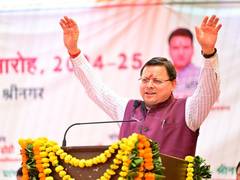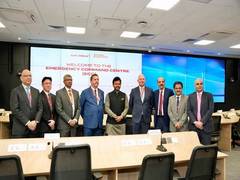Coal transition in India won’t lead to job losses if systems designed correctly: ISA DG Ajay Mathur
New Delhi, Aug 29 (PTI) India won’t experience any job losses in coal-dependent regions as it transitions towards renewable energy, provided the country designs its systems correctly, says Ajay Mathur, Director-General of the International Solar Alliance (ISA).
In an interview with PTI, Mathur also said energy security remains a driving force, especially in view of the Russia-Ukraine war impacting traditional energy sources.
While India doesn’t intend to fully eliminate coal, the sole dependable energy source in the nation, there is a target to diminish coal’s contribution from the existing 50 per cent in the energy mix to around 30 per cent and have 500 gigawatts (GW) of renewable energy capacity by 2030.
Addressing concerns about loss of jobs as India moves away from coal, Mathur, who has also been a member of the Indian Prime Minister’s Council on Climate Change, said the renewable sector holds promise for employment generation, particularly at the user level.
“We need far more trained electricians who can maintain the solar systems you and I set up in our own houses,” the energy sector expert said, stressing the need for skilled professionals in the industry.
“It is quite possible that if we design systems right, the last coal plants close on the day the last coal miner retires, so there’ll be no job issues on that side,” he said.
According to a study released in November 2021, more than 13 million people employed in coal mining, transport, power, sponge iron, steel, and bricks sectors will be impacted due to the impending coal transition.
The transition will have the highest impact on the people in Jharkhand, Chhattisgarh, Odisha, West Bengal, Madhya Pradesh, and Telangana, the study by think tank National Foundation for India said.
On the other hand, India can create 3.4 million new clean energy jobs providing employment to over a million people (one worker can perform more than one job) as it moves towards the goal of 500 GW of green energy capacity by 2030, according to a report released last year.
These employment opportunities will predominantly arise within the wind and on-grid solar energy sectors, the report by independent think tanks Council for Energy, Environment and Water and the US-based environmental advocacy group Natural Resources Defense Council said.
Mathur allayed concerns about land acquisition for renewable energy projects posing a challenge in India, highlighting the untapped potential of wastelands, particularly desert regions.
“The numbers that the ISA has crunched for India and for other countries suggest that if all the current wastelands in the forms of deserts are used to set up solar plants, that would be adequate,” he said.
Proactive state efforts in making land available and facilitating power purchase agreements are key drivers of solar growth, according to Mathur.
With India’s energy demand projected to double by 2030, Mathur said energy security remains a driving force, especially in light of global events, such as the Ukraine-Russia war, impacting traditional energy sources.
“Energy security has suddenly come back on people’s agenda… many countries which used to be at the forefront of the climate change agenda,” he said, adding India can substantially reduce energy imports and enhance security by harnessing solar energy.
On the impact of geopolitical tensions and supply chain constraints on India’s renewable energy deployment, the ISA DG said that these challenges could, in fact, incentivize diversification of manufacturing locations.
“Geographical diversification of manufacturing is essential,” he said, pointing out that supply chain issues have already disrupted solar panel availability in Africa.
He said India’s approach of incentivizing domestic production through schemes such as Performance-Linked Incentive (PLI) will enable cost-competitive manufacturing and ensuring a resilient supply chain.
Mathur acknowledged the challenges in achieving India’s rooftop solar targets and highlighted the need for revised utility economics, as distribution companies hesitate to purchase excess solar energy during off-peak hours.
“Buying and selling at the same price does not make sense for the distribution utility. And that is why distribution utilities have been averse to increasing the number of rooftop solar plants,” he said.
He suggested a pricing mechanism that aligns with utility economics to encourage greater rooftop solar adoption. “At the moment, put only enough PV that meets your own needs, so that anything that you sell is essentially excess,” he said, striking a balance between individual incentives and grid stability.
India, as the G20 presidency, has invited ISA as one of its international organisation partners.
The 18th G20 Summit is scheduled in New Delhi for September 9 and 10. The summit will bring together leaders from G20 member countries and guest nations to discuss various economic reforms.






